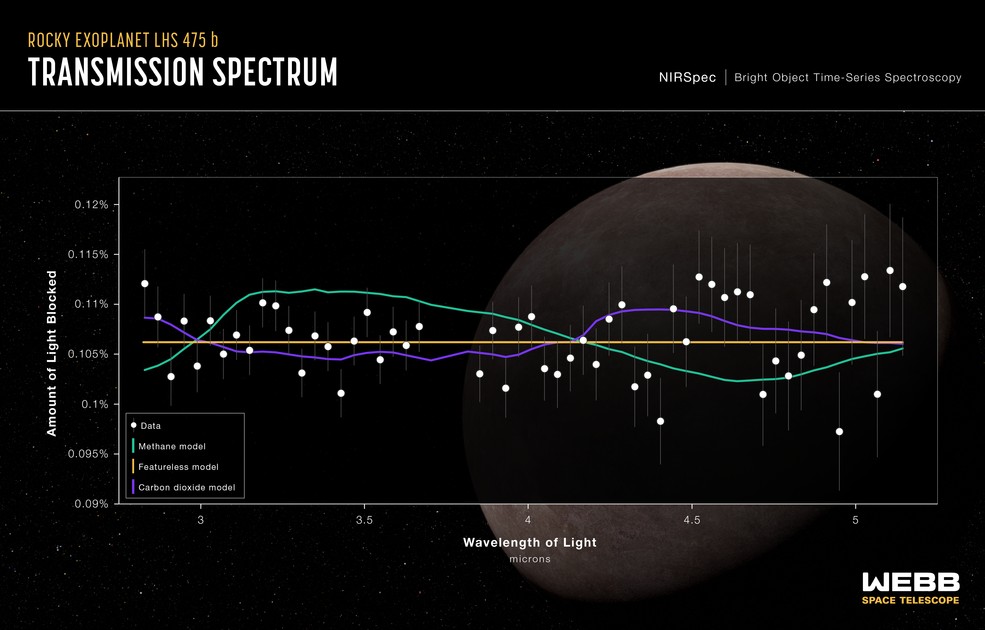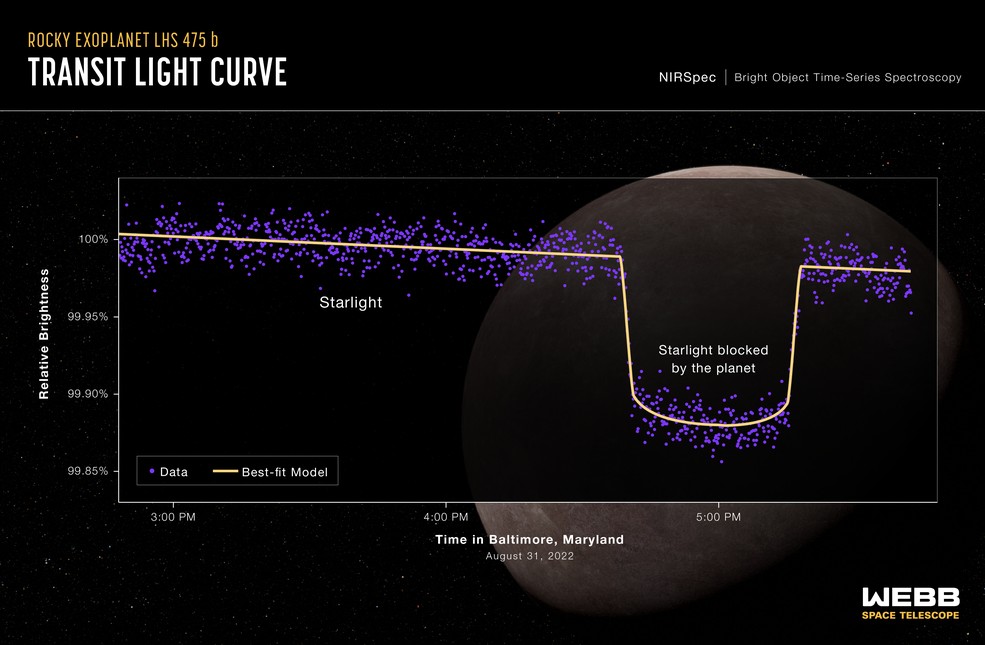
New exoplanet nearly size of Earth discovered by James Webb telescope
Using the James Webb Space Telescope, scientists have confirmed the existence of the exoplanet LHS 475 b for the first time. The object located at a distance of 41 light years from the Earth is 95% of the volume of the Earth.
A science team at Johns Hopkins University's Applied Physics Laboratory, led by Kevin Stevenson and Jacob Lustig-Yaeger, first studied the exoplanet LHS 475 b with the TESS space telescope. The results of the study indicated that the scientists discovered a new planet, but to be sure of this, they decided to use the capabilities of James Webb as well.
The James Webb Near Infrared Spectrograph (NIRSpec) captured the exoplanet LHS 475 b in just two transit observations. Lustig-Yaeger said that there is no doubt that the planet exists, because preliminary data from the telescope confirms it. Kevin Stevenson, in turn, noted that they were impressed by the fact that LHS 475 b is a rocky planet.

According to Mark Clampin, director of the astrophysics division at NASA headquarters in Washington, the first results of observations of LHS 475 b open up many other opportunities for studying the exoplanet's atmosphere with James Webb. He said that the space telescope brings scientists even closer to understanding the terrestrial worlds outside the solar system in a new way.
According to NASA, of all the telescopes in operation, only the James Webb is able to present the atmospheric characteristics of Earth-sized exoplanets. The team of scientists tried to estimate the composition of the gas mantle of LHS 475 b by analyzing it using transmission spectroscopy. It is currently unknown whether the exoplanet has an atmosphere.
Erin May of Johns Hopkins University's Applied Physics Laboratory said the James Webb telescope is so sensitive that it can easily detect a variety of molecules, but astronomers still cannot draw any definitive conclusions about LHS 475 b's atmosphere. And according to Lustig, the exoplanet cannot have such a thick atmosphere dominated by methane, as is the case with Saturn's moon Titan.

Data from James Webb also showed that LHS 475 b is several hundred degrees hotter than Earth. If scientists find clouds above the planet, it will have something in common with Venus, which has a carbon dioxide atmosphere.
LHS 475 b orbits the red dwarf exoplanet LHS 475 in two days. LHS 475 b is closer to its star than any other planet in the solar system.
- Related News
- Perseverance finds rock on Mars with signs of life on Earth (photo)
- On 25th anniversary of Chandra telescope, NASA released 25 photos previously unseen by the public
- Rare intermediate-mass black hole has been discovered at the center of our galaxy
- Stone "snowman" and pure sulfur crystals on Mars։ Remarkable discoveries by Perseverance and Curiosity
- When will humanity settle on Mars? Interview with Gernot Grömer
- TESS telescope discovers super-hot exoplanet the size of Neptune
- Most read
month
week
day
- Buyers massively complain about Samsung's Galaxy Buds 3 and Buds 3 Pro headphone, even finding hair in the box 820
- With today's mortgage interest rates, banks simply cannot sell products in 2025: Interview with Vardan Marutyan 811
- Ants and bees 'taught' tiny drones to navigate without GPS, beacons or lidars 675
- Samsung will release Galaxy Tab S10+ and Ultra tablets and Galaxy Z Fold 6 Slim and Galaxy w25 smartphones in October 640
- Mass production of iPhone SE 4 will begin this October, with sales starting in 2025 601
- Insider unveils specs of all smartphones of iPhone 17 series, including the 17 Slim 595
- Telegram's monthly active audience reaches 950 million 585
- What dangers can feature phones from unknown manufacturers conceal? 553
- For the first time in history, iPhone will get a Samsung camera 552
- Next iPhone SE may have powerful A18 chip and Apple Intelligence AI functions 546
- Archive
